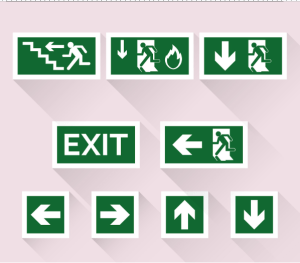Why Signages are Important and Why Do They Matter?
Signages are visual displays that communicate information to customers or potential customers. They can be found in various places, such as storefronts, roadsides, billboards, walls, windows, vehicles, or even online. Signages can have different functions, such as:
- Advertising: Signages can promote products, services, offers, or events to attract attention and generate interest.
- Branding: Signages can reinforce the identity, values, and personality of a business or organization.
- Directional: Signages can guide customers or visitors to a specific location or destination.
- Informational: Signages can provide useful or relevant information, such as opening hours, contact details, prices, or policies.
- Persuasive: Signages can influence customer behavior, such as encouraging them to buy, sign up, or take action.
That,s Why Signages are important for businesses because they can help them achieve various goals, such as:
- Increase visibility: Signages can make a business stand out from the competition and catch the eye of potential customers.
- Increase awareness: Signages can increase the recognition and recall of a business name, logo, slogan, or product.
- Increase communication: Signages can convey messages that are clear, concise, and compelling to the target audience.
- Increase engagement: Signages can create a positive impression and emotional connection with customers or potential customers.
- Increase conversion: Signages can motivate customers or potential customers to take the desired action, such as visiting a store, making a purchase, or contacting a business.

| Key Takeaways |
| – Signages are visual displays that communicate information to customers or potential customers. |
| – Signages can help businesses attract attention, increase brand awareness, convey messages, and influence customer behavior. |
| – Signages should be designed with the target audience, location, purpose, and message in mind. |
| – Signages should follow the principles of helpful, reliable, and people-first content, as Google recommends. |
How to Create Effective Signages for Your Business
Creating effective signages for your business requires careful planning and execution. Here are some steps to follow:
- Define your target audience: Who are you trying to reach with signage? What are their needs, preferences, and expectations? How can you appeal to them?
- Define your location: Where will you place your signage? What are the physical characteristics and limitations of the space? How visible and accessible will your signage be?
- Define your purpose: What do you want to achieve with your signage? What is the main message or call to action you want to convey?
- Define your message: What information do you want to communicate with your signage? How can you make it clear, concise, and compelling? How can you use words that people would use to look for your content?
- Define your design: How will you present your message visually? What colors, fonts, images, shapes, and sizes will you use? How will you balance the elements of contrast, alignment, repetition, and proximity?
- Define your budget: How much money do you have to spend on your signage? What are the costs of materials, production, installation, and maintenance?
To create effective signages for your business, you should also follow the principles of helpful, reliable, and people-first content, as recommended by Google1. This means that your signage should:
- Provide original, relevant, and comprehensive information that is beyond the obvious
- Provide insightful analysis or interesting information that adds value and originality
- Provide a descriptive, helpful summary of the content in the main heading or page title
- Provide clear sourcing, evidence of expertise, and background information about the author or the site that publishes it
- Provide a great page experience that is fast, secure, mobile-friendly, and easy to navigate
- Focus on benefiting people, not gaining search engine rankings
- Avoid copying or rewriting other sources without adding substantial value
- Avoid exaggerating or being shocking in nature
- Avoid creating search engine-first content that is stuffed with keywords or irrelevant links
Examples of Effective Signages for Different Businesses
To illustrate how different businesses can create effective signages for different purposes, here are some examples:
| Business | Purpose | Message | Design |
| A bakery | Advertising | Freshly baked bread every morning | A large banner with an image of bread and the text “Freshly baked bread every morning” in a warm color scheme and a friendly font |
| A gym | Branding | Fit for life | A logo with the text “Fit for life” in a bold font and the shape of a person exercising in a bright color scheme |
| A library | Directional | Children’s section | A sign with an arrow and the text “Children’s section” in a colorful font and the shape of a book in a playful style |
| A restaurant | Informational | Menu | A sign with the text “Menu” and a list of dishes and prices in a clear font and a simple layout |
| A dentist | Persuasive | Smile with confidence | A sign with an image of a smiling person and the text “Smile with confidence” in a positive color scheme and a professional font |
Related Questions and Answers
Here are some related questions and answers that people might have about signages:
| Question | Answer |
| What are the benefits of digital signages? | Digital signages are signages that use electronic displays, such as LED, LCD, or projection, to show images, videos, or text. Digital signage have some benefits over traditional signages, such as: – They can be updated easily and remotely – They can show dynamic and interactive content – They can be customized and personalized – They can measure and analyze the impact of the content |
| What are the types of signages? | There are many types of signages, depending on the function, location, material, or style. Some common types of signages are: – Banners: Signages that are made of fabric or vinyl and hung from poles or buildings – Billboards: Signages that are large and placed on roadsides or buildings to attract attention from a distance – Decals: Signages that are made of adhesive material and applied to surfaces, such as windows, walls, or vehicles – Neon signs: Signages that use neon gas or LED lights to create bright and colorful effects – Posters: Signages that are made of paper or cardboard and attached to walls or boards – Sandwich boards: Signages that are made of two boards hinged at the top and placed on sidewalks or streets |
| What are the best practices for signages? | Some best practices for signages are: – Use clear and simple language that is easy to read and understand – Use high-contrast colors that make the text stand out from the background – Use appropriate fonts that match the tone and style of the message – Use images that are relevant and appealing to the target audience – Use white space to create balance and focus on the message – Use consistent branding elements, such as logo, colors, and fonts, across all signage also that’s Why Signages are Important. |
Conclusion
Why Signages are Important, because they can help them communicate information to customers or potential customers in an effective way. Signages can help businesses attract attention, increase brand awareness, convey messages, and influence customer behavior. To create effective signages for your business, you should follow some steps and principles that will help you define your target audience, location, purpose, message, design, and budget. By doing so, you can create signages that will benefit your business and your customers.
